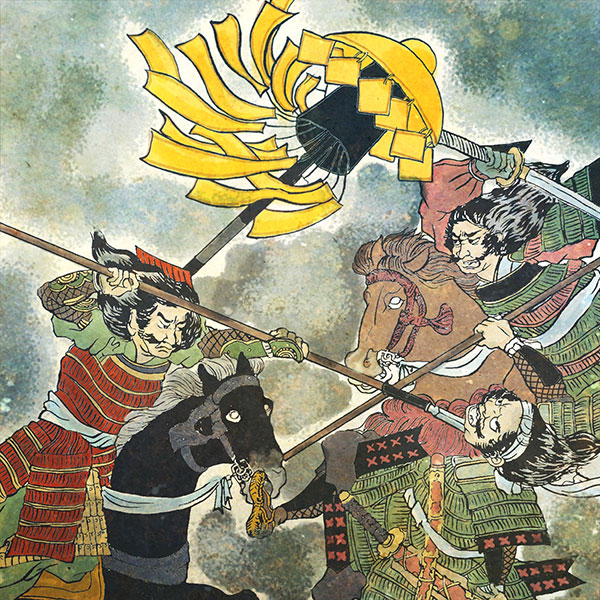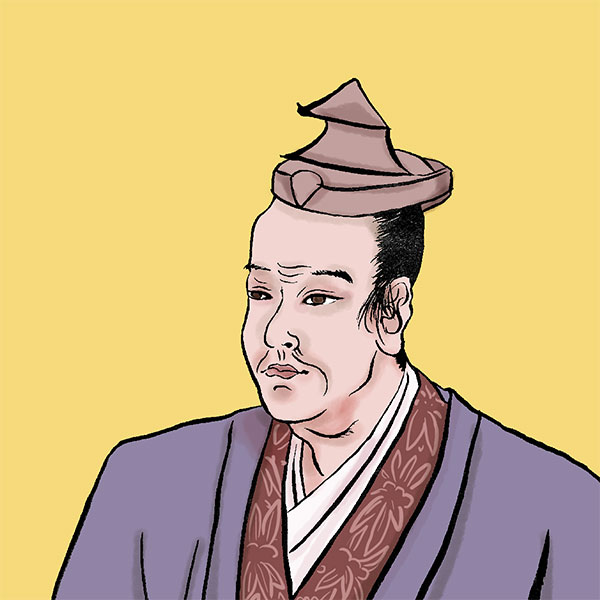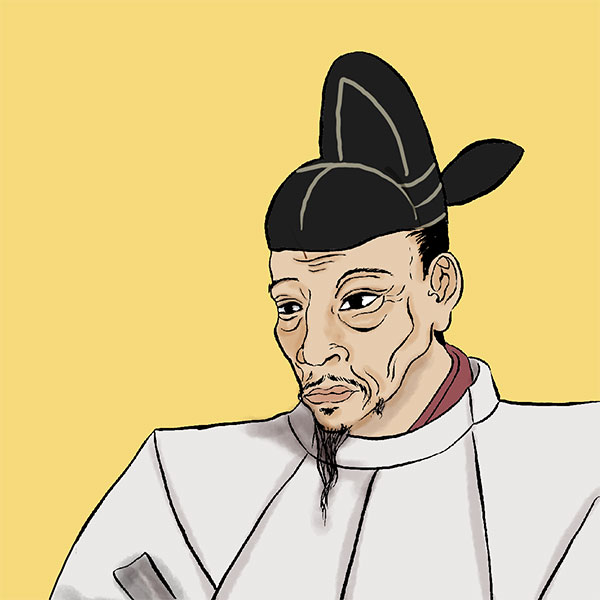Battle of Yamazaki (1/2)The end of Mitsuhide Akechi's "Three Days of Tenka"

Battle of Yamazaki
- Article category
- case file
- Incident name
- Battle of Yamazaki (1582)
- place
- Kyoto
- Related castles

Shoryuji Castle

Yodo Castle
- people involved
On June 2, 1582, Akechi Mitsuhide defeated Oda Nobunaga in the Honnoji Incident. Afterwards, Mitsuhide and Hashiba (Toyotomi) Hideyoshi, who returned to Kyoto in the ``Chugoku Daigaeshi'', traveled from Yamazaki (present-day Oyamazaki Town, Otokuni District, Kyoto Prefecture) to Shoryuji Castle (Nagaokakyo City, Kyoto Prefecture) on June 13th. I will fight. Hideyoshi won the Battle of Yamazaki (Battle of Tennozan), which was a memorial battle for Nobunaga, and then unified the country. Mitsuhide, who was defeated, lost his life while fleeing to his castle, Sakamoto Castle (Shimosakamoto, Otsu City, Shiga Prefecture). Ta. This time, we will take a closer look at the Battle of Yamazaki, which was the ``battle that divided the world.''
The enemy is at Honnoji Temple!
The Battle of Yamazaki began with the Honnoji Incident, which occurred on June 2, 1582. The battle in which Akechi Mitsuhide suddenly defeated his master, Oda Nobunaga, was greeted with surprise by the people of the time. Even today, various theories are being proposed as to why Mitsuhide caused the Honnoji Incident, and one theory that Mitsuhide plotted the Honnoji Incident alone is that it was because he held a grudge against Nobunaga. There are many theories, including one that it was due to neurosis, and one that it was because Nobunaga was planning to conquer Shikoku in order to kill Motochika Chosokabe, who was related to Mitsuhide.
Furthermore, there are theories that the main culprits were actually separate perpetrators such as Hideyoshi Hashiba and Toshizo Saito, and theories that there were masterminds such as Hideyoshi, Tokugawa Ieyasu, Yoshiaki Ashikaga, the Imperial Court, the Society of Jesus, and Terumoto Mori. The Honnoji Incident is said to be the greatest mystery of the Sengoku period.
During the Honno-ji Incident, Mitsuhide attacked Nobunaga at Honno-ji Temple with overwhelming military force, inflicting wounds on Nobunaga. Nobunaga then evacuated his subordinates, set Honnoji Temple on fire, and committed suicide. By the way, his body was never found, so perhaps Nobunaga had actually escaped from Honnoji Temple? There is even a theory of survival.
After Honno-ji Temple, Mitsuhide attacked Oda Nobutada, Nobunaga's heir son. Nobutada was staying at nearby Myokaku-ji Temple (Nakagyo-ku, Kyoto City, Kyoto Prefecture) and tried to go to Honno-ji Temple for relief, but in the end he was unable to make it in time, and led 500 people to the Nijo Imperial Palace and holed up. However, when attacked by Akechi's army, he set the palace on fire and committed suicide. Again, no bodies were found.
Mitsuhide's movements after the Honnoji Incident
Mitsuhide Akechi defeated Nobunaga Oda in the Honnoji Incident, took control of Kyoto, entered Sakamoto Castle, and by June 4th had almost conquered Omi. After that, he entered Azuchi Castle, which was Nobunaga's residence, and gave the treasures left by Nobunaga to his vassals and allies. It is also said that the priority given to pacifying Omi was to counter Katsuie Shibata.
On June 7th, as a messenger from the Crown Prince of Emperor Ogimachi, he met with his friend Kanemi Yoshida, and received the Imperial Prince's approval to entrust him with maintaining public order in Kyoto. Mitsuhide sent 50 pieces of silver to Kanemi, who helped him spread the word to the Imperial Court, and 100 pieces during his imprisonment, and also sent silver pieces to temples and shrines in Kyoto to further spread the word.
He entered Azuchi Castle and took over as Nobunaga, and the rest was to unify the country! However, after that, Mitsuhide was not able to get things going smoothly. He appeals to his relatives and allies for cooperation, but Tadaoki Hosokawa, to whom his daughter Tama (Garasha Hosokawa) is married, shaves his head and expresses condolences to Nobunaga along with his father Fujitaka, and then imprisons Tama and refuses to cooperate with Mitsuhide. . Fujitaka was Mitsuhide's friend, so it must have been a shock for Mitsuhide, and he tried to persuade him, but in the end he didn't accept.
Junkei Tsutsui of Yamato Province, who was Mitsuhide's ruling daimyo and friend, also sent troops to Omi and cooperated with Mitsuhide, although he was reluctant at first, but in the end he sided with Hideyoshi. In addition, he appealed to the Uesugi clan, the Mori clan, the Hojo clan, and the Chosokabe clan to form an alliance, but in the meantime, he ended up fighting Hashiba Hideyoshi, who had returned to Kyoto from China.
It is often said that the reason why Mitsuhide's allies did not appear was due to a lack of support, but another reason has been the absence of Nobunaga's head. Because Nobunaga's head was not found, some people wondered, ``Did Mitsuhide really kill Nobunaga?'' In fact, Hideyoshi gained allies by spreading false information that ``Nobunaga is alive.''
Hideyoshi's "Great Return to China"
Now, let's follow Hideyoshi Hashiba's movements. At the time of the Honnoji Incident, the main vassals of the Oda family were scattered and fighting in various places, and Hideyoshi was also in the middle of an attack on China to defeat the Mori, and was attacking Takamatsu Castle in Bitchu.
It was on the night of June 3rd (or early morning of June 4th) that Hideyoshi learned of the Honnoji Incident. When Mitsuhide Akechi captured the messenger sent to the Mori clan, he found that he had a secret letter containing a plan: ``Mitsuhide will defeat Nobunaga, and then the Mori clan and Mitsuhide will attack Hideyoshi in a pincer attack.''
When Hideyoshi learned of this, he hurriedly tried to settle the battle at Bitchu Takamatsu Castle. He immediately made peace with the Mori clan and departed for Kyoto on June 6th (*4th and 5th) with approximately 20,000 soldiers. It takes 8 to 10 days to cover a distance of approximately 230 km from Bitchu Takamatsu Castle to Yamazaki, that is, from Okayama Prefecture to Kyoto Prefecture.
The route seems to have been Nodono → Numagusuku → Himeji Castle → Akashi → Hyogo → Amagasaki, and according to modern simulations, it would take 10 days. How Hideyoshi achieved a major comeback in China is a matter of debate. They succeeded by successfully securing food by reversing the supply route for the Chinese attack.Since it would be difficult to do so by land, they used ships.Actually, they were aware of the Honnoji incident in advance (that is, Hideyoshi's mastermind theory), so they immediately turned back. Various theories have been put forward, such as.
In any case, Hideyoshi arrived at Yamazaki on June 13th, and there is no doubt that a battle between Mitsuhide and Yamazaki took place. There are various theories, so if you are interested, please do some research.
Battle of Yamazaki ① Hideyoshi with a large army vs. Mitsuhide with few allies
Unable to gather allies, Mitsuhide Akechi received a report of Hideyoshi Hashiba's approach on the 10th, and hurriedly repaired Yodo Castle (Fushimi Ward, Kyoto Prefecture) and prepared for battle. Mitsuhide ended up fighting against Hideyoshi Hashiba with about 16,000 (10,000) soldiers. Akechi's army included senior vassals called ``Akechi Goshuro'' such as Hidemitsu Akechi, Mitsutada Akechi, Toshizo Saito, Masaru Fujita, Shigetomo Mizoo, Sadaoki Ise, and Sadayuki Akechi.
Hideyoshi, on the other hand, is trying to capture the people of Settsu Province (most of north-central Osaka Prefecture, southeastern Hyogo Prefecture), which is on the path to Kyoto. Settsu Province, located at the entrance to the Kinai region, was previously ruled by Murashige Araki, but he rebelled against Nobunaga Oda. After that, Settsu Province was ruled by Ukon Takayama and Kiyohide Nakagawa. Hideyoshi lied to Kiyohide Nakagawa, saying, ``Nobunaga is alive,'' and succeeded in getting the Settsu people to his side.
Furthermore, Nobutaka Oda, Nagahide Niwa, and others who had gathered troops for the Shikoku conquest joined the Hashiba army with the remaining 4,000 soldiers. In this way, the Hashiba army became an army of over 20,000 (some say 40,000). On June 12, Hideyoshi held a military council in Tomita (Tomita-cho, Takatsuki City, Osaka Prefecture) and formulated a strategy that would focus on Yamazaki as the main battlefield. At this time, Hideyoshi became the de facto leader, and Nobutaka, a member of the Oda clan, became the supreme commander.
In this way, from around the 12th, the two sides faced each other across the Enmyoji River (Koizumi River). In the Hashiba army, members of the Settsu clan such as Ukon Takayama and Kiyohide Nakagawa took up positions on the front line along the river, and Tsuneoki Ikeda and others formed on their right. Kanbei Kuroda, Hidenaga Hashiba, and others set up along the road at the foot of Mt. Tennozan. Hideyoshi's main camp was located at Hoshakuji Temple at the southern foot of Mt. Tennozan, and Nobutaka Oda and Nagahide Niwa were seated in front of it.
On the other hand, Mitsuhide set up his headquarters at Gobozuka across the Enmyoji River, and in front of it he stationed Toshizo Saito, Sadayuki Agoe, and the Kawachi clan. At that time, Yamazaki was covered in marshes, and a large army could only pass through the narrow space between Tennozan and the marsh. The plan was for Akechi's army to line up to cover the exits and defeat Hashiba's army one by one. It seems that they were thinking of a strategy that would utilize their specialty, guns, but unfortunately it rained on the 13th. Incidentally, there is also a theory that Hideyoshi set up a decisive battle on a rainy day when he could neutralize the guns.
Battle of Yamazaki ② Akechi's army is defeated in just a few hours
On June 13th, the Battle of Yamazaki finally began. Around 4:00 p.m., Nakagawa Kiyohide's troop, which was moving to take up position next to Takayama Ukon's troop, was attacked by Sadaoki Ise's troop of Akechi's army. Furthermore, Toshizo Saito's squad attacks Takayama Ukon's squad. Hashiba's army was at a disadvantage due to the surprise attack of Akechi's army, but with reinforcements from Hideyoshi's main army and Hidemasa Hori's army, they managed to hold out. Meanwhile, Hidenaga Hashiba's Kuroda Kanbei forces also engaged the Akechi army. The battle reached a stalemate.
- people involved

- WriterNaoko Kurimoto(Writer)I am a former travel industry magazine reporter. I have loved history, both Japanese and world history, since I was a child. I usually enjoy visiting temples and shrines, especially shrines, and often do ``pilgrimages to sacred places'' themed around historical figures. My favorite military commander is Ishida Mitsunari, my favorite castle is Kumamoto Castle, and my favorite castle ruins is Hagi Castle. My heart flutters when I see the ruins of battle castles and the stone walls of castle ruins.






